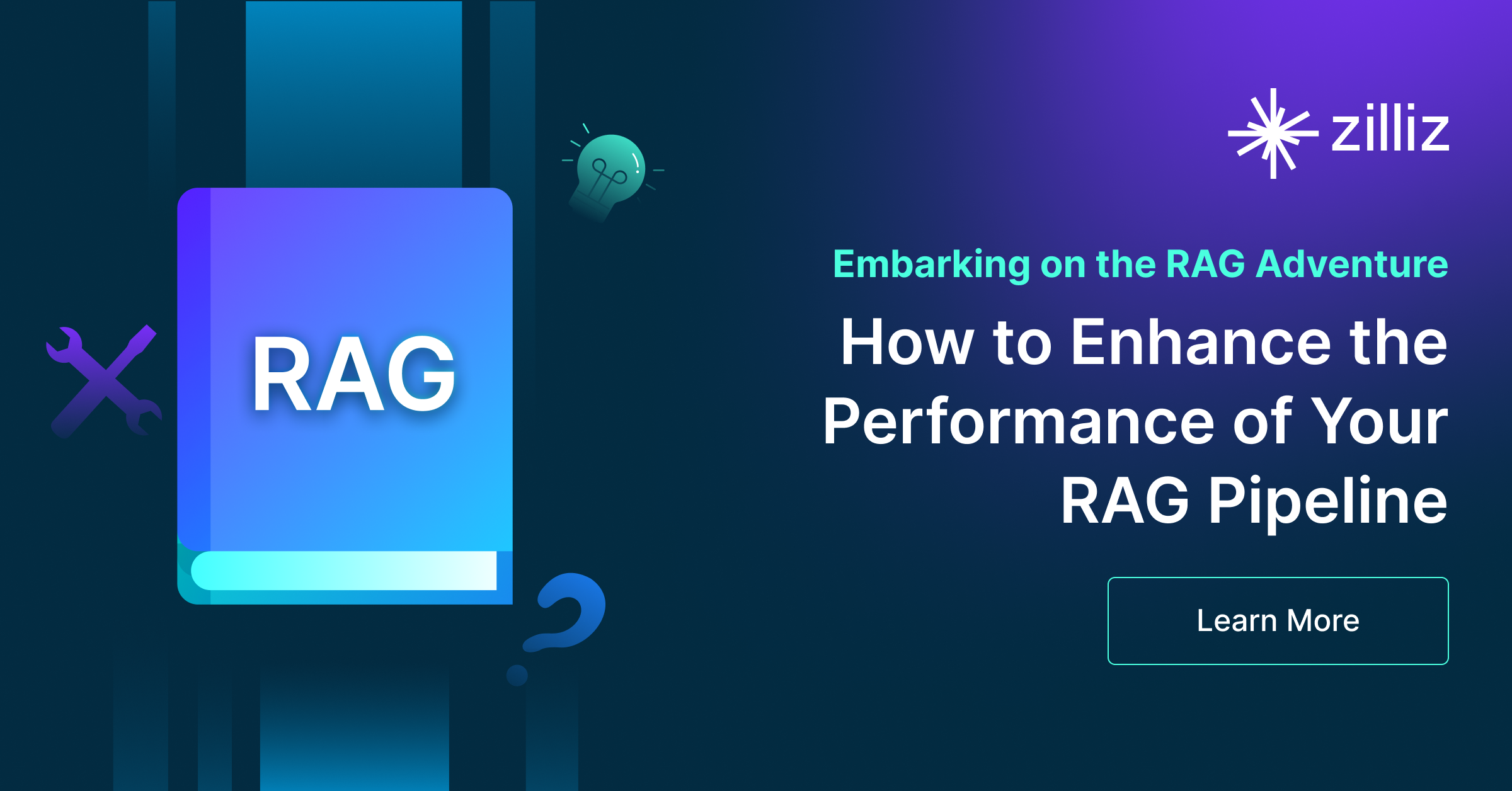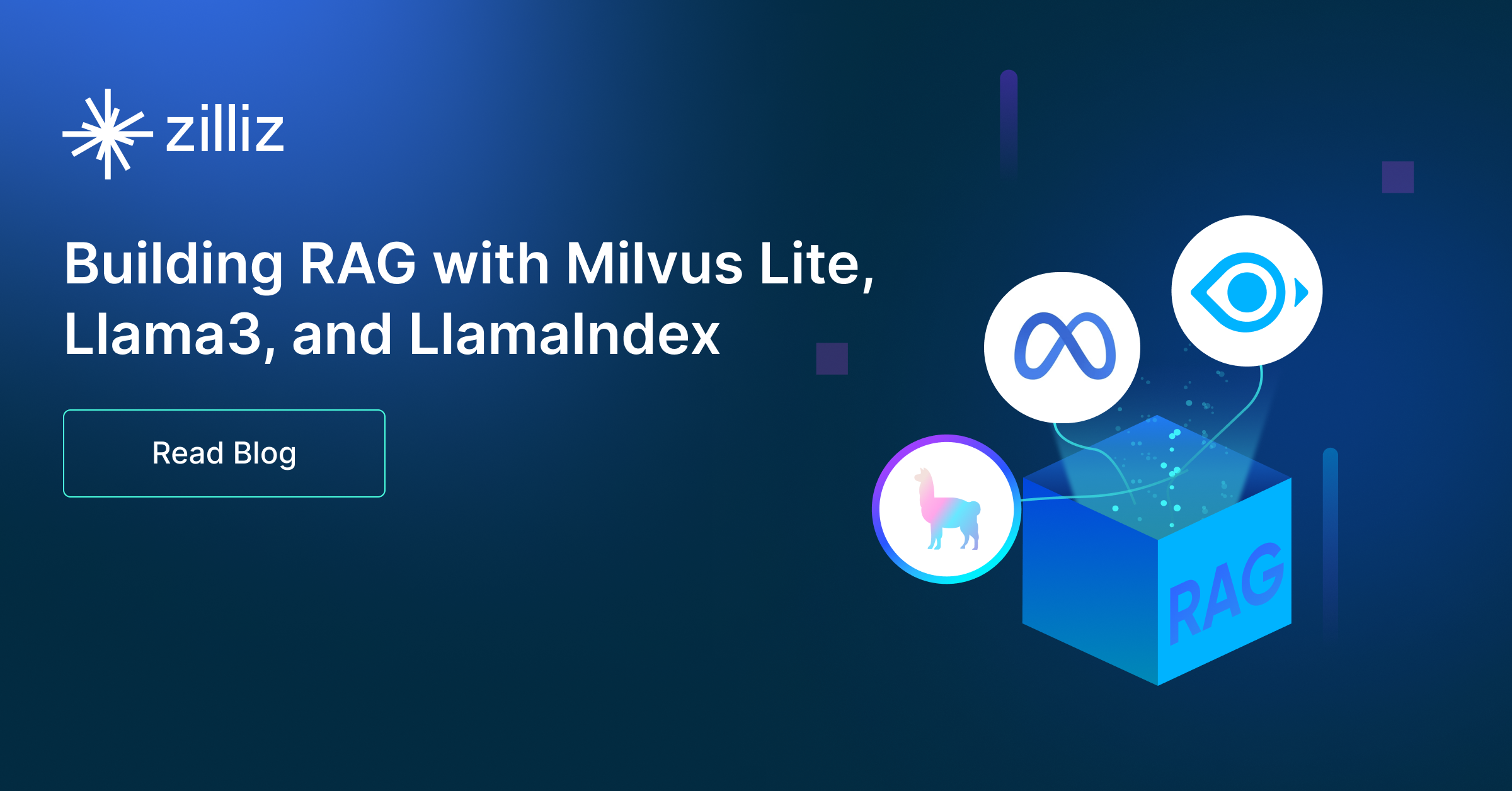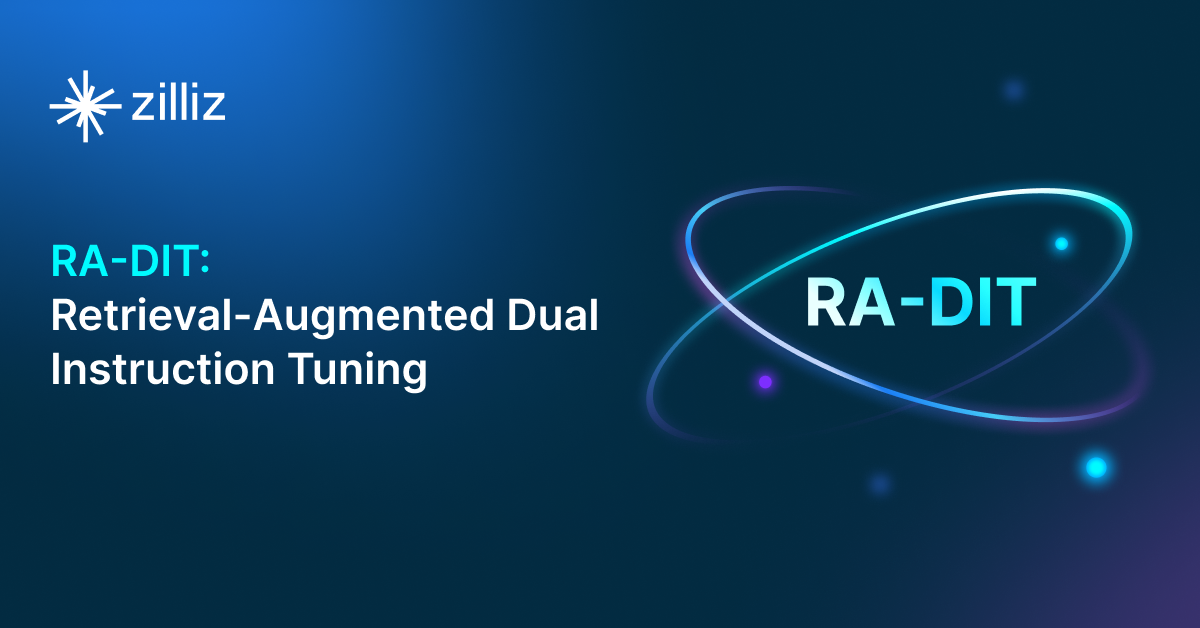Exploring the Frontier of Multimodal Retrieval-Augmented Generation (RAG)
Multimodal RAG is an extended RAG framework incorporating multimodal data including various data types such as text, images, audio, videos etc.
Read the entire series
- Build AI Apps with Retrieval Augmented Generation (RAG)
- Mastering LLM Challenges: An Exploration of Retrieval Augmented Generation
- Key NLP technologies in Deep Learning
- How to Evaluate RAG Applications
- Optimizing RAG with Rerankers: The Role and Trade-offs
- Exploring the Frontier of Multimodal Retrieval-Augmented Generation (RAG)
- Enhancing ChatGPT with Milvus: Powering AI with Long-Term Memory
- How to Enhance the Performance of Your RAG Pipeline
- Enhancing ChatGPT with Milvus: Powering AI with Long-Term Memory
- Pandas DataFrame: Chunking and Vectorizing with Milvus
- How to build a Retrieval-Augmented Generation (RAG) system using Llama3, Ollama, DSPy, and Milvus
- A Guide to Chunking Strategies for Retrieval Augmented Generation (RAG)
- Improving Information Retrieval and RAG with Hypothetical Document Embeddings (HyDE)
- Building RAG with Milvus Lite, Llama3, and LlamaIndex
- Enhancing RAG with RA-DIT: A Fine-Tuning Approach to Minimize LLM Hallucinations
- Building RAG with Dify and Milvus
- Top 10 RAG & LLM Evaluation Tools You Don't Want To Miss
The integration of Multimodal Large Language Models (MLLMs) such as GPT-4V, Gemini Pro Vision, and LLaVA into Retrieval-Augmented Generation (RAG) pipelines heralds a new chapter in the evolution of interactive applications. By blending visual data with traditional text-based retrieval mechanisms, these advanced models introduce a layer of complexity and sophistication previously unattainable, pushing the boundaries of what AI can perceive and create.
What is Multimodal RAG?
Retrieval-Augmented Generation (RAG) is an innovative AI framework designed to enhance the generative capabilities of Large Language Models (LLMs) by augmenting them with an external knowledge retrieval process. Traditionally, RAG systems have relied predominantly on textual data, retrieving relevant text snippets to inform and guide the generative process of LLMs. However, the advent of Multimodal RAG has expanded this concept to encompass a richer tapestry of data, integrating both text and visual information, and in some cases, even audio and other data types, to create a more nuanced and contextually aware generative process.
How Multimodal RAG Works: The Process in Detail
Query Reception:
The process begins when the system receives a query, which could vary in form—ranging from textual questions to visual prompts or a mix of both. This flexibility allows users to interact intuitively and conveniently with the system for specific needs.
Multimodal Knowledge Retrieval:
Vector Embedding: Each piece of information within the system's knowledge base, be it text or an image, is converted into a high-dimensional vector using advanced embedding techniques. This transformation facilitates a uniform representation of diverse data types, making them comparable and searchable.
Retrieval Mechanism: Upon receiving a query, the system employs various indices and searches to identify and fetch the most relevant pieces of information from its knowledge base. This mechanism relies on comparing the vector representation of the query against the embeddings of the stored data, leveraging algorithms optimized for high-dimensional searches.
Data Synthesis and Response Generation:
Integration of Retrieved Data: The retrieved multimodal data, which may include relevant text passages, images, and potentially other forms of media, is then consolidated to form a comprehensive context for the query. This step is crucial for ensuring that the generated response is not only accurate but also rich in content.
Generative Model: A Multimodal Large Language Model, equipped to handle and synthesize information from various data types, then processes this integrated context. It generates a coherent response that seamlessly incorporates insights drawn from the retrieved textual and visual data.
The Advantages of Multimodal RAG
Enhanced Contextual Awareness: Multimodal RAG systems gain a deeper understanding of context by integrating visual data with text, enabling more accurate and relevant responses.
Richer Content Generation: Including visual elements allows these systems to generate content that is not only textually informative but also visually engaging, catering to a broader range of applications and user needs.
Greater Flexibility: Multimodal RAG can handle various queries and tasks, from answering complex questions requiring synthesis of text and image data to creating content that seamlessly blends written and visual elements.
Overcoming LLM Limitations: Similar to traditional RAG, Multimodal RAG helps mitigate common limitations of LLMs, such as knowledge cutoff and hallucinations, by providing up-to-date and verifiable external information. Visual data further enhances this capability by offering alternative ways to verify and enrich the generated content.
Real-world Applications of Multimodal RAG
The potential applications of Multimodal RAG are vast and varied, spanning numerous domains. In education, it could revolutionize e-learning platforms by generating interactive content that combines textual explanations with illustrative diagrams and videos. In customer service, chatbots could provide more comprehensive assistance by understanding and responding to queries with a mix of text and images. In the creative industries, such as marketing and advertising, Multimodal RAG could automate multimedia content creation, blending catchy copy with compelling visuals.
Multimodality RAG Challenges
However, the fusion of different data types is not without its challenges. The key lies in ensuring that textual and visual data coexist and complement and enhance each other's value. This requires sophisticated retrieval techniques capable of parsing and correlating complex multimodal data, which necessitates a deep understanding of the textual and visual domains and their interplay.
Innovations in Multimodal RAG Techniques
To navigate the intricacies of multimodal RAG, leveraging cutting-edge tools becomes imperative. Open-source platforms such as FiftyOne offer unparalleled data management and visualization capabilities, allowing for the intricate examination and manipulation of multimodal datasets. Similarly, Milvus is a robust vector store, facilitating efficient and scalable storage and retrieval of complex data embeddings. At the same time, LlamaIndex offers a streamlined approach for orchestrating LLMs, tying together the various components of a multimodal RAG pipeline.
Evaluating Multimodal Retrieval
The cornerstone of a successful multimodal RAG system lies in its ability to accurately and relevantly retrieve information across modalities. This necessitates a set of robust evaluation metrics tailored to assess the performance of multimodal retrieval systems. Precision, recall, and F1 scores, traditionally used in unimodal contexts, must be adapted and expanded upon to account for the nuances of multimodal data. Furthermore, benchmark datasets play a crucial role, providing a standardized canvas against which different approaches can be measured and compared. For more information about evaluating your RAG system, see our blog: How to Evaluate RAG Applications.
Shaping the Future of AI Interactions
The exploration of multimodal RAG is more than a technical endeavor; it represents a paradigm shift in how we envision AI systems interacting with the world. By weaving together textual and visual data, we are enhancing AI's capabilities and aligning it more closely with the multifaceted nature of human perception and understanding. As this field continues to evolve, the insights and methodologies developed will undoubtedly serve as a foundation for the next generation of AI applications, transforming the landscape of interactive systems and opening new horizons in human-computer interaction.
In conclusion, the foray into multimodal RAG is a testament to the ever-evolving landscape of AI, challenging the status quo and inviting us to reimagine the potential of machine intelligence. As researchers, developers, and innovators continue to push the boundaries of what is possible, the principles and innovations emerging from this field will undoubtedly shape the future of AI, making it more intuitive, context-aware, and, ultimately, more human.
- What is Multimodal RAG?
- How Multimodal RAG Works: The Process in Detail
- The Advantages of Multimodal RAG
- Real-world Applications of Multimodal RAG
- Multimodality RAG Challenges
- Innovations in Multimodal RAG Techniques
- Evaluating Multimodal Retrieval
- Shaping the Future of AI Interactions
Content
Start Free, Scale Easily
Try the fully-managed vector database built for your GenAI applications.
Try Zilliz Cloud for FreeKeep Reading

How to Enhance the Performance of Your RAG Pipeline
This article summarizes various popular approaches to enhancing the performance of your RAG applications. We also provided clear illustrations to help you quickly understand these concepts and techniques and expedite their implementation and optimization.

Building RAG with Milvus Lite, Llama3, and LlamaIndex
Retrieval Augmented Generation (RAG) is a method for mitigating LLM hallucinations. Learn how to build a chatbot RAG with Milvus, Llama3, and LlamaIndex.

Enhancing RAG with RA-DIT: A Fine-Tuning Approach to Minimize LLM Hallucinations
RA-DIT, or Retrieval-Augmented Dual Instruction Tuning, is a method for fine-tuning both the LLM and the retriever in a RAG setup to enhance overall response quality.
